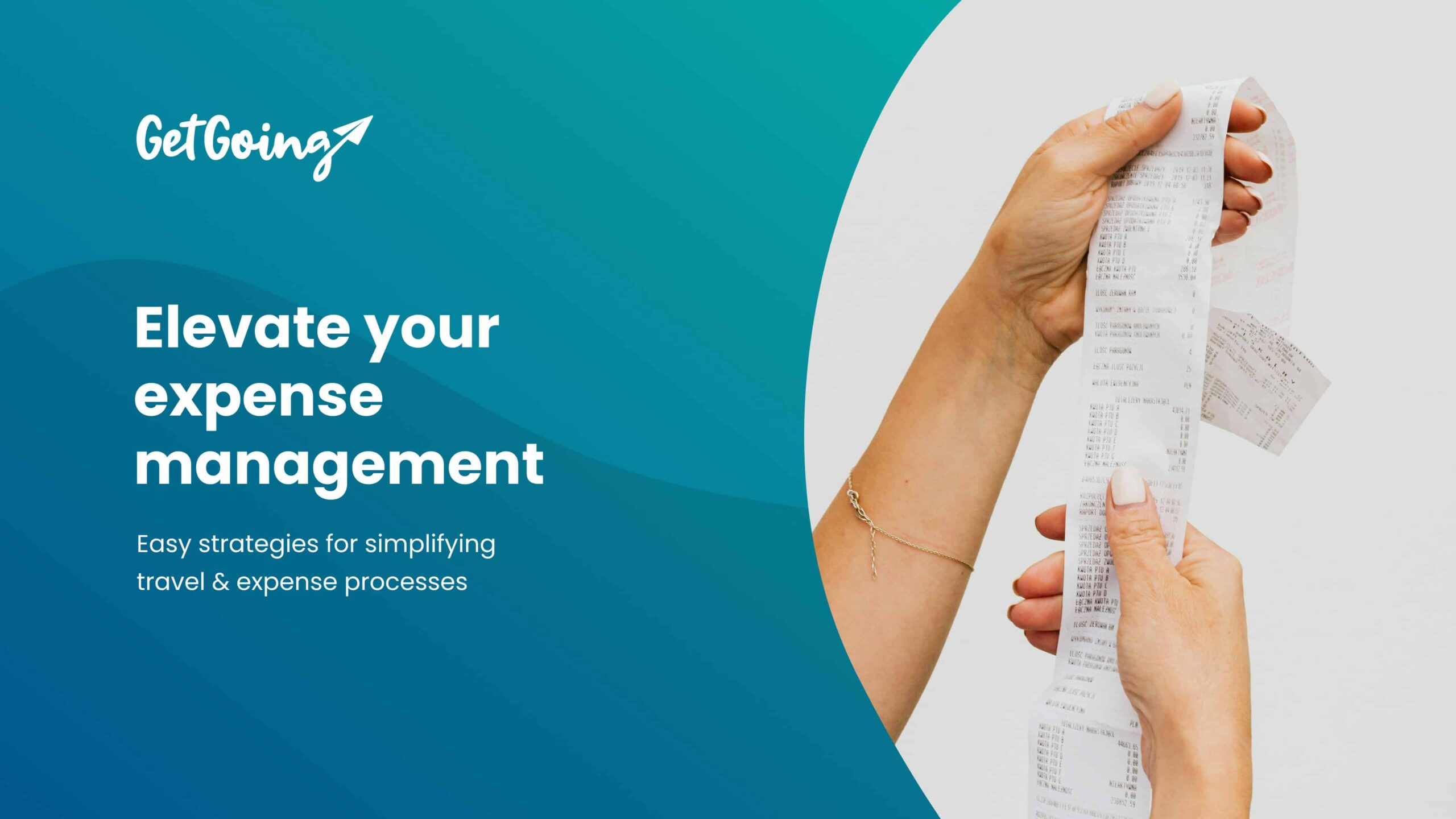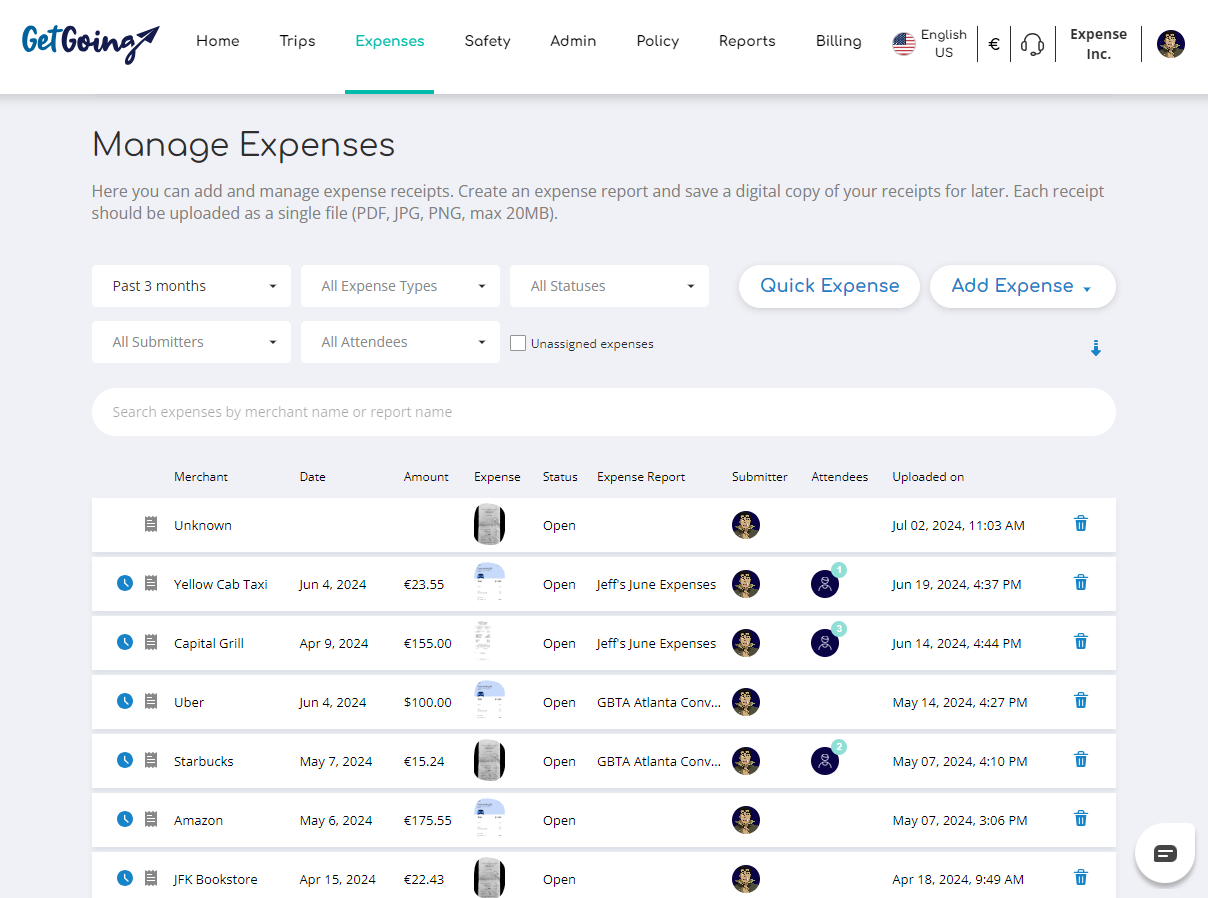Managing employee travel spend is such an important part of increasing profitability and ensuring your company stays on budget. This is why it’s key to find ways to ensure compliance through the use of a robust travel policy so that you can improve your company’s return on investment and control costs.
We will look at some of the best practices to manage employee travel spend to help boost the value of business travel to your company and to employees, and at the same time implement budget-controlling tactics that will keep your business on track.
1. Start with a clear travel policy
There’s no controlling employee travel spend if you don’t have a clear travel policy set up. It’s as simple as that. That’s why it’s key to have a travel policy that outlines travel booking procedures, allowable expenses and reimbursement guidelines. Ideally you would have a travel management solution that allows you to automate the travel policy in the background, so after a one-time set-up, the system works for you in the background.
Within your travel policy, it’s important to establish allowable limits for flights, hotels, rental cars and train travel that might be in accordance with seniority or frequency and distance of travel. This means also stating clearly which class of flights and accommodations are permitted based on these same parameters. It’s also key to set up approval processes so that managers or travel managers can ensure you keep to your travel budget based on the established guidelines.
2. Keep track of travel data
Having a travel and expense management solution that measures key travel metrics like total travel spend per category of travel expenses, the percentage of trips booked within policy, the total spend by individual or department, trip purpose, by office or by cost center is crucial to control and optimize your travel spend. Knowing where your budget is going will help you better control and direct it towards where you want it to go.
By monitoring travel data you can better identify patterns or areas where costs can be optimized, such as creating an internal campaign to reduce last-minute bookings or encouraging the use of frequent flyer miles and loyalty programs at hotels. You can then use these dashboards to easily visualize expenses and analyze the trends to make data-informed decisions.
3. Educate employees
Cost-effective behavior may not be innate in your staff, which is why it’s important to educate employees about cost-effective behavior. If it’s a big group meeting, maybe you can encourage team leaders to set up a grid where people can note their arrival and departure times so that carpooling of taxis or a van pick-up can be arranged. You can also encourage the use of public transportation, or car sharing and create employee rewards programs to reward cost-efficient behaviors. Incentives do wonders to reach your goals.
Another tactic could be encouraging employees to take bleisure time to fly back on less expensive days, and to also try to arrange meetings during the middle of the week when hotels and flights are less expensive.

read more
4. Encourage planning ahead
There is nothing that cuts into the budget like planning business travel really close to the date. Flights will most likely be high and rental cars and hotels as well. To get lower fares, it’s always a good idea to book well ahead of time. If you can, encourage staff to foresee business travel at the start of the year so that you can start planning ahead of time and save money. Ideally flights will be booked at least one month in advance to avoid a hike in prices.
5. Enforce reporting deadlines
It’s a good idea to have a window for submitting and approving expense reports to ensure not only can you better manage and control expenses, but also can close expenses at the end of each quarter and make sure everyone is doing their best to stick to the budget. You can also regularly audit submitted expenses to ensure they comply with your policies.
6. Regularly manage and adjust policies
Policies should be dynamic and flexible, which is why it’s so important to regularly review reports and update the travel policy to reflect the dynamic market conditions. Be sure to get employees involved who can weigh in on the processes and suggest room for improvement in the whole travel and expense management process.
If you need tips on how to transform expense management in 4 easy steps, read our helpful guide:

Elevate your expense management now!
7. Go virtual when possible
Virtual meetings are not only more eco-friendly, they are also a great alternative to in-person travel, allowing your company to reduce costs while also lessening its environmental impact. Of course, Zoom meetings are not always possible, and once in a while in-person team meetings are great for team morale, but as much as possible, go virtual.
8. Make sure per diem allowances are clear
Per diem allowances should be laid out in your travel policy. Per diem can encompass both meals and incidental expenses depending on the destination, and you can easily decide to adjust the rates according to locations and regions as a meal in India won’t be the same price as a meal in Sweden. Keeping in mind a high standard, it’s a good idea to do a range that makes sense for the country that is being visited.
On the other hand, when clients visit your office and you take them to lunch, in terms of general office expenses, the budget allotted will be likely different.
9. Leverage technology and automation
Automation and technology are fundamental aspects of managing employee travel spend, because it ensures that the whole process of managing travel and spend is controlled under one platform.
By implementing automated expense reporting systems, employees can upload receipts on the go with mobile apps and submit expense reports to avoid lost invoices and having to keep track of a paper trail. Approvers can also log in to their systems from anywhere to approve expense reports.

10. Use an all-in-one travel and expense management solution
A travel and expense management solution that works for your company to help you easily book travel and control expenses relating to your business is one of the best ways to get ahead of your employee travel spend. This means that the preferred vendors and negotiated rates are already in the system, so your travelers or those in charge of making travel arrangements just need to log-in and start booking to get access to the best rates.
With an all-in-one solution you can also ensure the platform tracks bookings and expenses, allowing you to keep an eye on booking and spend patterns and optimize where you see fit. One all-in-one solution is easier and gives for better oversight and analysis and to unlock room for savings.
Frequently Asked Questions (FAQ) about Travel Policies
What should a good travel policy include?
A good travel policy should contain clear guidelines and rules for all aspects of business travel to provide security for both employees and the company. This includes rules for booking accommodation and transport, using travel means, and reimbursement of expenses. It is also important to define an approval process and ensure that compliance with the travel policy is regularly checked. A travel expense policy can help simplify and standardize these processes.
How does a travel expense policy make travel expense reporting easier?
By implementing a clear travel policy, the entire process of travel expense reporting is made much easier. It defines exactly which costs are reimbursable, which expenses must be approved, and which receipts employees must submit. This ensures that managing expenses runs more smoothly for both business travelers and accounting. A structured travel policy can help avoid misunderstandings and process reimbursement more quickly.
How do you create a travel policy for business trips?
Creating a travel policy requires careful planning and clear guidelines. First, you should determine which travel expenses the company will cover, such as flights, accommodation or rental cars. Then it is important to define the maximum limit for various expenses and set rules for using business class or other travel methods. Many companies use a travel policy template to serve as a guide. It is also helpful to pay attention to compliance requirements and ensure that the policy meets tax requirements.


